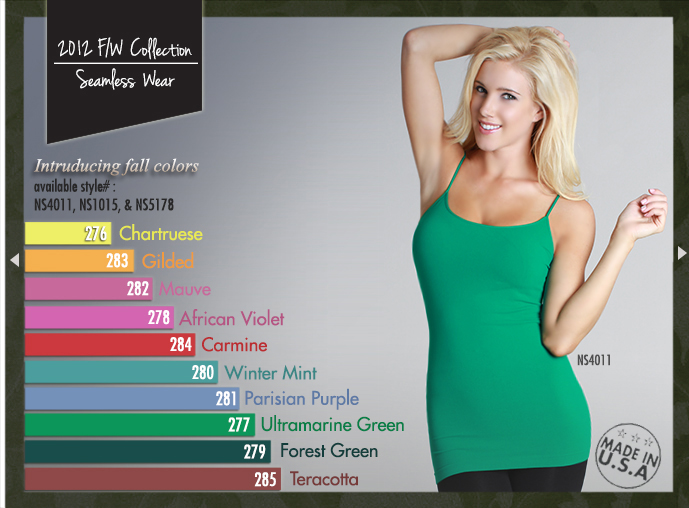
Above: Beautiful Fashion Model Behati Prinsloo Modeling On The Beach For Vogue Thailand Fashion Editorials Modeling As One Of The Highest Paid Models In The World.
What Is Menstrual Toxic Shock Syndrome (TSS)?
Toxic Shock Syndrome (TSS) related to your period (your menstrual cycle) is a rare, but potentially fatal disease that is caused by one of two different types of bacteria (Staphylococcus Aureus or Group A Streptococcus) that are normally found colonizing the vagina of most women. Even though Toxic Shock Syndrome (TSS) generally occurs in women under the age of 25, with the highest incidence in teen girls and young adult women ages 13 to 19, older women are not immune from developing this potentially deadly disease.
Almost all reported cases of menstrual Toxic Shock Syndrome (TSS) are related to tampon use inside the vagina. Once inside the vagina, the tampon, especially higher absorbency tampons (tampons that can absorb a greater amount of blood during your period), create a favorable environment for these bacteria to produce toxins that can cause the signs and symptoms of menstrual Toxic Shock Syndrome (TSS).
How To Reduce Your Risk Of Menstrual Toxic Shock Syndrome (TSS) – Preventing Toxic Shock Syndrome (TSS) In Teenage Girls
Higher absorbency tampons increase the risk of menstrual Toxic Shock Syndrome (TSS), so many doctors recommend that if you use tampons that you only use higher absorbency tampons when you absolutely need to stop a super-heavy flow of blood during your period. Your blood flow can change from day to day throughout your period, so a lot of women only use super absorbency tampons on the days when they bleed the most (generally on day 1 or day 2 of their period) and then switch to regular or light absorbency tampons when their blood flow decreases (generally on the last days of their period). It is important to note that even regular or light absorbency tampons can cause menstrual Toxic Shock Syndrome (TSS) in teen girls and adult women, so a lot of doctors recommend that you use pads and pantiliners (panty liners) if you would like to completely eliminate the risk of getting menstrual Toxic Shock Syndrome (TSS).
Symptoms of Toxic Shock Syndrome (TSS)
It is very important for all women (specially teenagers, teens, and teenage girls) to know the symptoms of menstrual Toxic Shock Syndrome (TSS). Typically symptoms will occur within 3 days of the start of menstruation.
Some of the symptoms of menstrual Toxic Shock Syndrome (TSS) are like the flu, but they can become serious very quickly. The most common signs and symptoms of menstrual Toxic Shock Syndrome (TSS) include:
*Rising body temperature.
*High fever with or without chills.
*Low blood pressure, which sometimes causes a feeling of dizziness upon standing.
*Extreme weakness.
*Fainting, or near fainting when you stand up.
*Skin changes that look like a sunburn, or redness of the tissues inside your mouth, eyes, or vagina.
Other less common symptoms of menstrual Toxic Shock Syndrome (TSS) may include vomiting, diarrhea, and severe muscle aches. In addition, a woman who has had menstrual Toxic Shock Syndrome (TSS) can develop it again. If a woman has had menstrual Toxic Shock Syndrome (TSS) before, she should talk to her doctor before using tampons again.
The Persistent Dangers Of Menstrual Toxic Shock Syndrome (TSS)
It is extremely important that you immediately remove the tampon inside your vagina and that you get medical care immediately if you experience any of these symptoms during your period. Menstrual Toxic Shock Syndrome (TSS) is a rapidly progressing disease that can have devastating consequences if left untreated. When untreated, menstrual Toxic Shock Syndrome (TSS) can lead to shock, renal failure, and even death. It is also important to note that tampons are not the only objects associated with menstrual Toxic Shock Syndrome (TSS) since almost anything inserted into the vagina carries a potential risk including contraceptive sponges, diaphragms, and menstrual cups.
How to Prevent Toxic Shock Syndrome (TSS) For Women That Use Tampons During Their Period (Menstruation)
One of the most important things that you can do to prevent menstrual Toxic Shock Syndrome (TSS) if you use tampons during your period is to change your tampon every few hours, even if your period is light. The reason for this is because leaving your tampon inside your vagina for too long (like all day or all night) puts you at risk of getting a rare but very dangerous illness called menstrual Toxic Shock Syndrome (TSS). The problem is that when you keep a tampon inside your vagina for too long, bacteria can grow. Girls who use very absorbent tampons are most at risk for this especially if the tampons are kept inside their vaginas for a long time, giving the bacteria plenty of time to grow. These bacteria can grow within the tampon, enter the body from inside the vagina, then invade the bloodstream eventually releasing toxins that can cause a very severe, and occasionally life threatening illness.
Is There Anything I Can Do to Prevent Menstrual Toxic Shock Syndrome (TSS)? What If I Forget About My Tampon?
Fortunately, there are some very important things that you can do during your period to help prevent menstrual Toxic Shock Syndrome (TSS). The most important thing that you can do to prevent menstrual Toxic Shock Syndrome (TSS) during your period is to always change your tampon every 4 to 6 hours. If for some reason you forget that you have a tampon inside your vagina (or there is no place nearby for you to privately remove the tampon), and it has been longer than 6 hours, proceed to immediately remove the tampon that is inside your vagina and switch to pads for the rest of the day just to be safe. Using the proper tampon absorbency for your menstrual blood flow is also an important way to help prevent menstrual Toxic Shock Syndrome (TSS). This basically means using higher absorbency tampons only on your heaviest days of blood flow during menstruation. On your lighter days of blood flow during menstruation, use tampons with lower absorbency. In addition, you may be able to significantly reduce your risk of getting menstrual Toxic Shock Syndrome (TSS) by alternating tampons and pads during your period.
Menstrual Hygiene – How Often Should I Change Tampons Or Pads During My Period (Menstruation)? Tampon Tips For Teens And The Tampon Debate
Using tampons only on the days when you bleed the most (generally on day 1 or day 2 of your period) and then switching to pads and pantiliners (panty liners) when your blood flow decreases (generally on the last days of your period) and using tampons only during the day and pads and pantiliners (panty liners) at night can also significantly decrease your risk of getting menstrual Toxic Shock Syndrome (TSS).
How To Avoid Getting Menstrual Toxic Shock Syndrome (TSS) – Menstrual Toxic Shock Syndrome (TSS) Prevention And Why Absorbency Matters
Choosing The Right Absorbency:
It is very important to choose the lowest absorbency for your menstrual blood flow. Your menstrual blood flow changes from day to day, so you may need to use different tampon absorbencies on different days of your period.
How To Choose The Right Absorbency Tampon For Your Menstrual Blood Flow:
You can start by taking the tampon out from inside your vagina after wearing it for four hours. If the tampon has soaked blood up to the full amount, you may want to try a tampon with a higher absorbency. If white fiber is still showing on your tampon, you should choose a lower absorbency tampon.
Tampon Absorbency And The Tampon Debate – Preventing Menstrual Toxic Shock Syndrome (TSS) In Adult Women And Teenagers (Teenage Girls)
If you sleep less than eight hours a night and use a tampon, choose the lowest absorbency tampon that you need. Insert a fresh tampon inside your vagina just before going to bed and remove the tampon as soon as you wake up in the morning.
If you sleep more than eight hours, do not use a tampon and instead use a pad before going to bed. This is extremely important because you should never leave a tampon inside your vagina for more than six to eight hours. However, if you would like to totally avoid the risk of menstrual Toxic Shock Syndrome (TSS) as associated with tampon use, you should avoid using tampons completely during your period and use pads and pantiliners (panty liners) instead.
Some people may try to convince you that you can lower your risk of getting menstrual Toxic Shock Syndrome (TSS) by using certain types of tampons, which is simply not true. All types of tampons, whether made from cotton or rayon, put you at risk for getting menstrual Toxic Shock Syndrome (TSS). Make sure that you ONLY use tampons during menstruation. If you feel that you need extra protection at other times during the month, pads and pantiliners (panty liners) are your best option. However, many doctors recommend that you should only use pads and pantiliners (panty liners) during your period if you would like to completely eliminate the risk of getting menstrual Toxic Shock Syndrome (TSS).

Above: Beautiful Fashion Model Behati Prinsloo Modeling On The Beach For Vogue Thailand Fashion Editorials Modeling As One Of The Highest Paid Models In The World.
ZARZAR MODELS is one of the top modeling agencies for women in the United States representing models in print fashion editorials, high fashion runway, film, television commercials, and promotions. The agency represents top models in all of the major fashion cities and counties including Los Angeles, Beverly Hills, Hollywood, Orange County Southern California, San Diego, San Francisco, Las Vegas, Phoenix, Miami, New York, London, Paris, Milan, Sao Paulo, and Tokyo and recruits and represents models throughout the world through its global fashion and modeling network.
About ZARZAR MODELS
ZARZAR MODELS is one of the top modeling agencies for women in the United States representing models in print fashion editorials, high fashion runway, film, television commercials, and promotions. The agency represents top models in all of the major fashion cities and counties including Los Angeles, Beverly Hills, Hollywood, Orange County Southern California, San Diego, San Francisco, Las Vegas, Phoenix, Miami, New York, London, Paris, Milan, Sao Paulo, and Tokyo and recruits and represents models throughout the world through its global fashion and modeling network.
Shop the fashion modeling campaigns at:
https://zarzarfashion.com
or simply visit the world's most beautiful supermodels at:
https://tv.zarzarmodels.com













